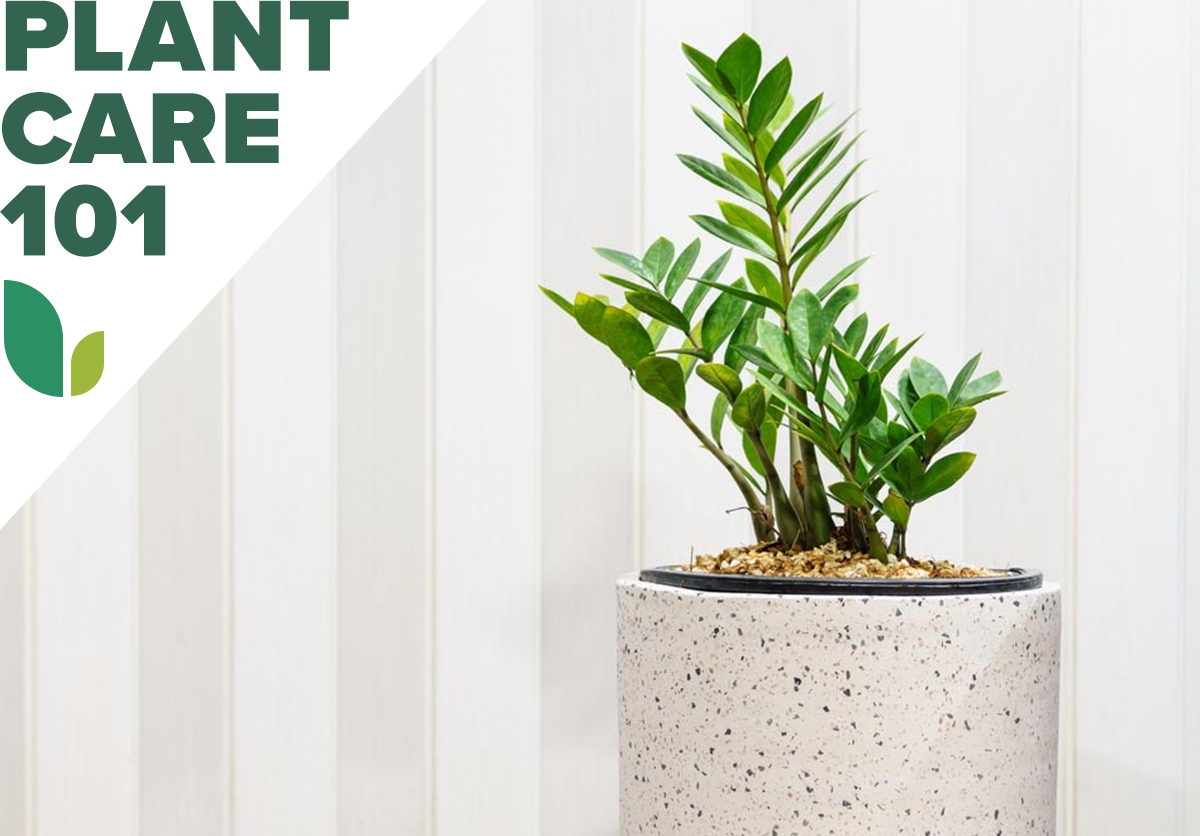

We may earn revenue from the products available on this page and participate in affiliate programs. Learn More ›
Zamioculcas zamiifolia plants are most often called ZZ plants, but they go by other names as well, such as Zanzibar gem, Zuzu plant, aroid palm, eternity plant, and emerald palm. They’re a tropical perennial native to eastern Africa with glossy green leaves that reach up to 6 inches long and range from a pale hue to a deeper green as they mature. When mature, ZZ plants grow 2 to 3 feet tall and produce a pale yellow flower that looks like an ear of corn.
ZZ plant care is as easy as it gets, so they’re ideal for not-so-green thumbs and those who might forget to water their plants for weeks at a time. Read on for everything you need to know about caring for a ZZ houseplant, including soil, light, water, and temperature needs.
ZZ Plant Care at a Glance
Common Name: ZZ Plant
Scientific Name: Zamioculcas zamiifolia
Soil: well-draining, pH 6 to 7
Light: indirect sunlight
Water: every 2 to 3 weeks
Food: 20-20-20 houseplant fertilizer
Temperature and Humidity: not sensitive to high or low humidity
Propagation: use cuttings from either leaf or stem
Safety: keep away from children and pets
How to Care for ZZ Plant
This houseplant is known for its easy care, and is a terrific choice for novice gardeners—or green thumbs who don’t have a lot of time to dedicate to plant tending.
Selecting Soil for ZZs
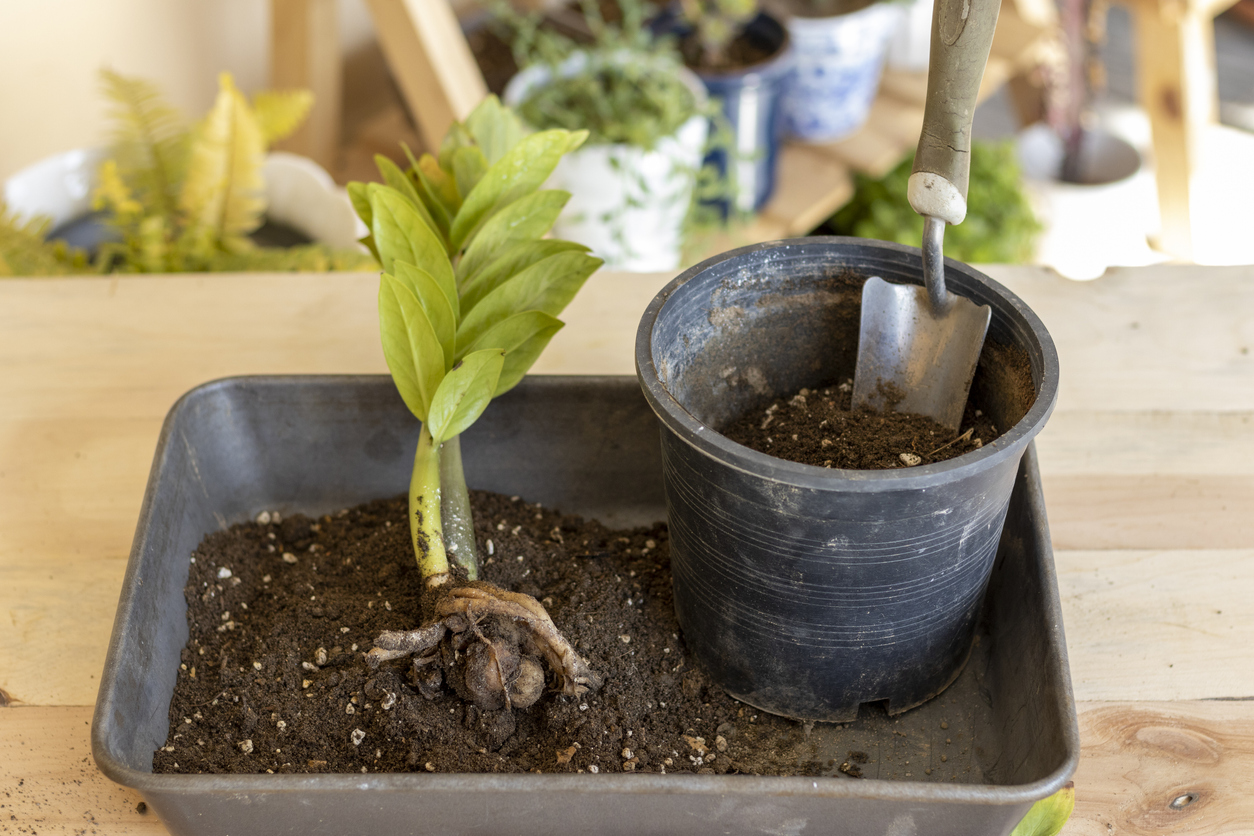
An ideal ZZ plant soil mix is comprised of 1/4 compost, 1/4 sand and 1/2 standard potting soil. The soil should have a pH of between 6 and 7. But ZZ plants aren’t very picky about their soil composition as long as it drains well since they do not tolerate an overly moist environment.
RELATED: The Best pH Meters for Home and Garden Use
Choose the Right Light
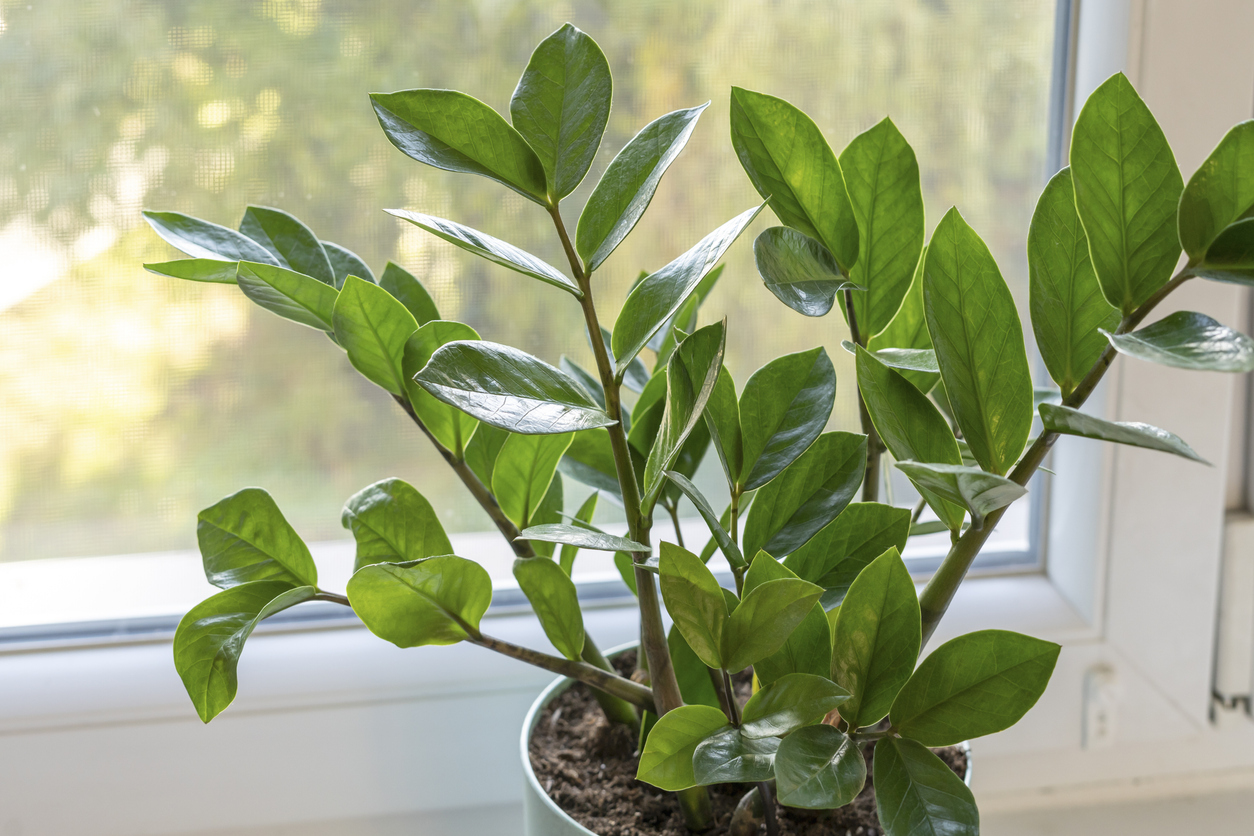
One thing that makes ZZ plants particularly easy to care for is their low-maintenance light requirements. They can survive in any level of indirect light, but they grow fastest in moderate indirect sunlight. Direct sunlight will stress the plant so keep them away from sunny windows.
Water Your ZZ Plant
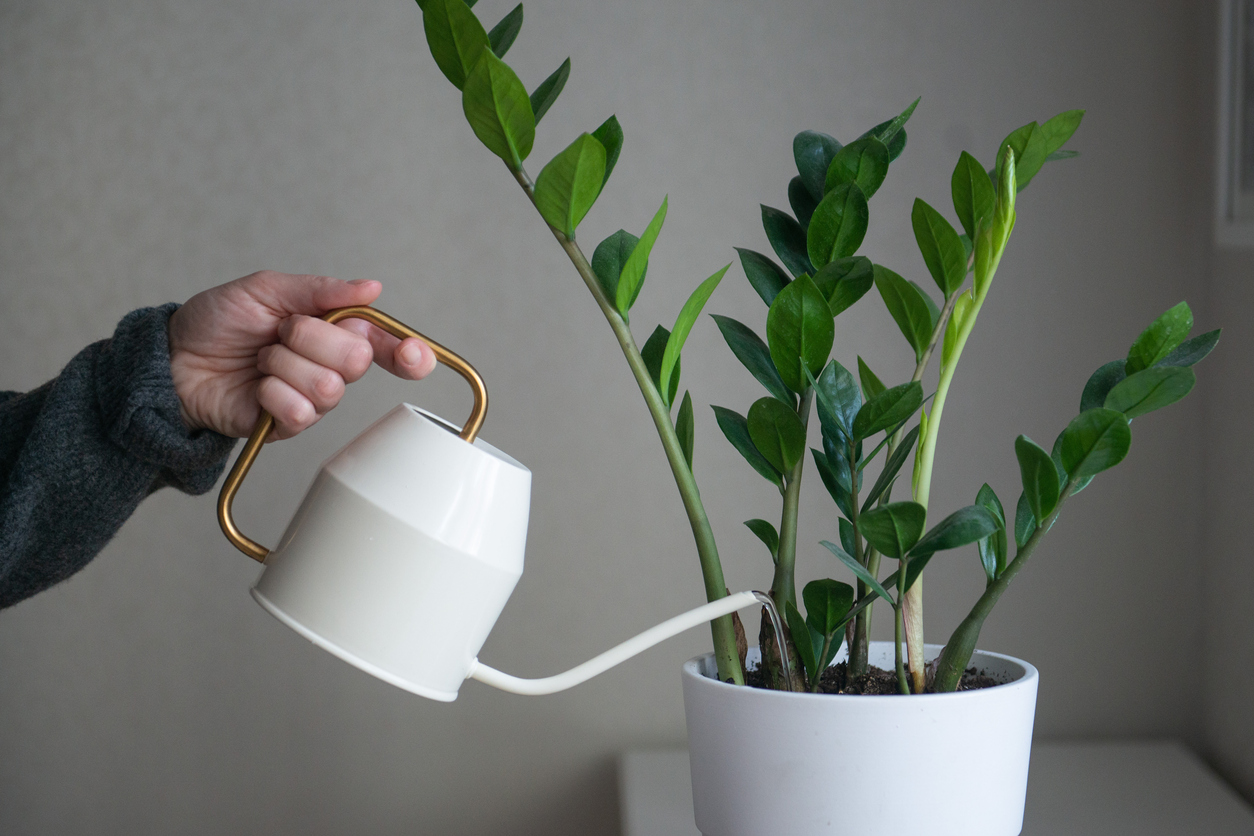
It’s important to understand how often to water ZZ plant. These drought-resistant plants only need water every 2 to 3 weeks, or when the top 3 to 4 inches of soil feels dry to the touch. Overwatering can deprive the plant’s rhizomes of the oxygen they need, leading to root rot. Cut back on ZZ plant watering in winter months when the plant goes through a dormancy period.
ZZ plants have modified stems called rhizomes, which conserve water for weeks at a time. So if you tend to chronically under-water your houseplants, a ZZ plant might be perfect for you.
Fertilize Your ZZ Plant

ZZ plants don’t require fertilizer but a standard 20-20-20 mixture can boost their growth. This type of fertilizer is commonly available and includes 20 percent nitrogen, 20 percent phosphate, and 20 percent soluble potash (the remainder is filler). Fertilize the plant if desired once or twice a year.
Set the Temperature and Humidity
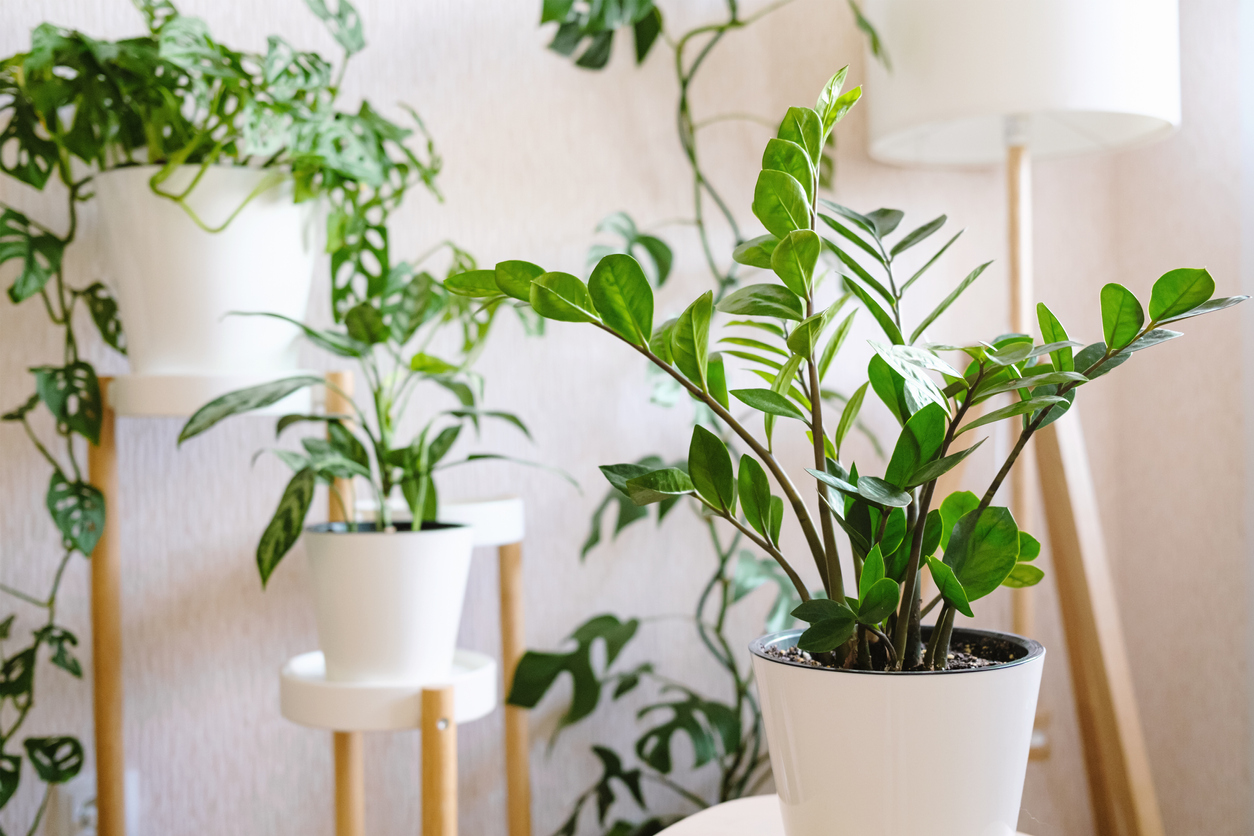
ZZ plants thrive when temperatures are between 65 and 85 degrees Fahrenheit. Make sure the temperature in your home is always above 60 degrees to help your ZZ survive. As with most houseplants, it’s important to keep your ZZ plant away from air conditioners, radiators, and other heat sources to avoid drastic temperature and humidity changes.
RELATED: 10 Low-Maintenance Houseplants to Keep Indoor Air Fresh
Prune Your ZZ Plant
ZZ plants don’t require pruning to be healthy, but they tend to spread out quite a bit, so if you want to control their growth you can prune them back periodically.
- Use clean, sharp shears or scissors.
- Trim a few long stems from their base to remove them.
- If the stems are healthy, you can propagate them following the steps in the next section.
You can also safely shorten any ZZ stems without removing them entirely by trimming off the ends.
How to Propagate ZZ Plant
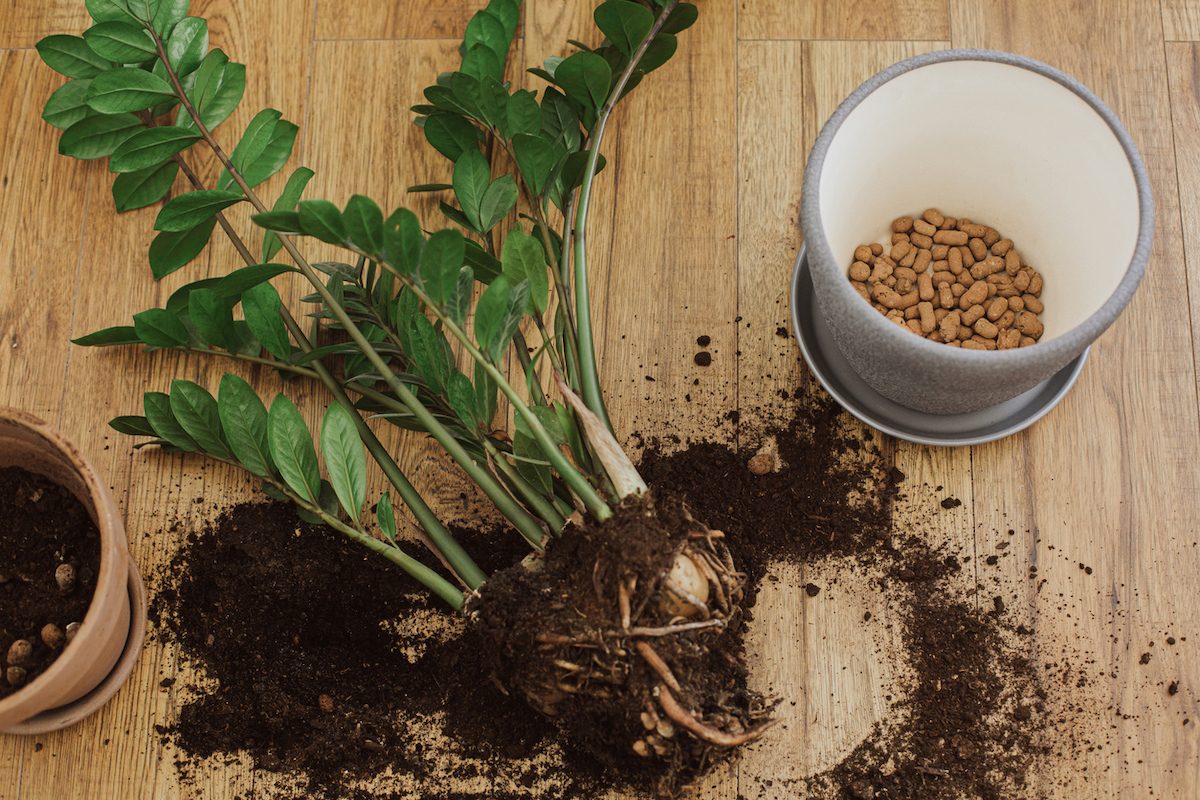
Like every other aspect of ZZ plant care, ZZ plant propagation is incredibly simple. To propagate a ZZ plant:
- Remove the plant from its container and separate the rhizomes.
- Fill several pots about 1/3 full of potting soil.
- Place each rhizome in its own pot or place several of them together.
- Backfill the pot with soil until it covers the rhizome.
- Water each pot until it drains out of the bottom.
Another way to propagate ZZ is to take a cutting that includes two leaves and a piece of stem and pot it using the same process.
RELATED: 10 Houseplants You Can Propagate the Fastest for an Ever-Expanding Indoor Garden
Types of ZZ Plants
- ‘Raven’: Also called a black ZZ plant, this variety features glossy dark purple leaves that almost appear to be black.
- ‘Zenzi’: This is a rare ZZ plant variety with curlier leaves than standard ZZ plants.
- ‘Dwarf’: Also known as ‘Zamicro’ and almost identical to a standard ZZ except that it’s shorter, this plant grows up to 2 feet high.
- ‘Lucky classic’: This variety has leaves that are rounded on the ends, as opposed to the pointy leaves characteristic of standard ZZ plants.
- ‘Luckywhit’: This variegated zz plant is characterized by blotched and marbled yellow-green leaves.
Safety Considerations
All parts of the ZZ plant are toxic to cats, dogs, and people, so it’s important to keep these houseplants out of reach of pets and young children. But if children or pets do consume part of the ZZ plant, they will likely experience digestive problems rather than more severe side effects.
Rumors once circulated that ZZ plants cause cancer, but there is no evidence that they are carcinogenic. But wash your hands after interacting with the plants because calcium oxalate crystals in their sap could cause skin irritation.
Potential Pests and Diseases
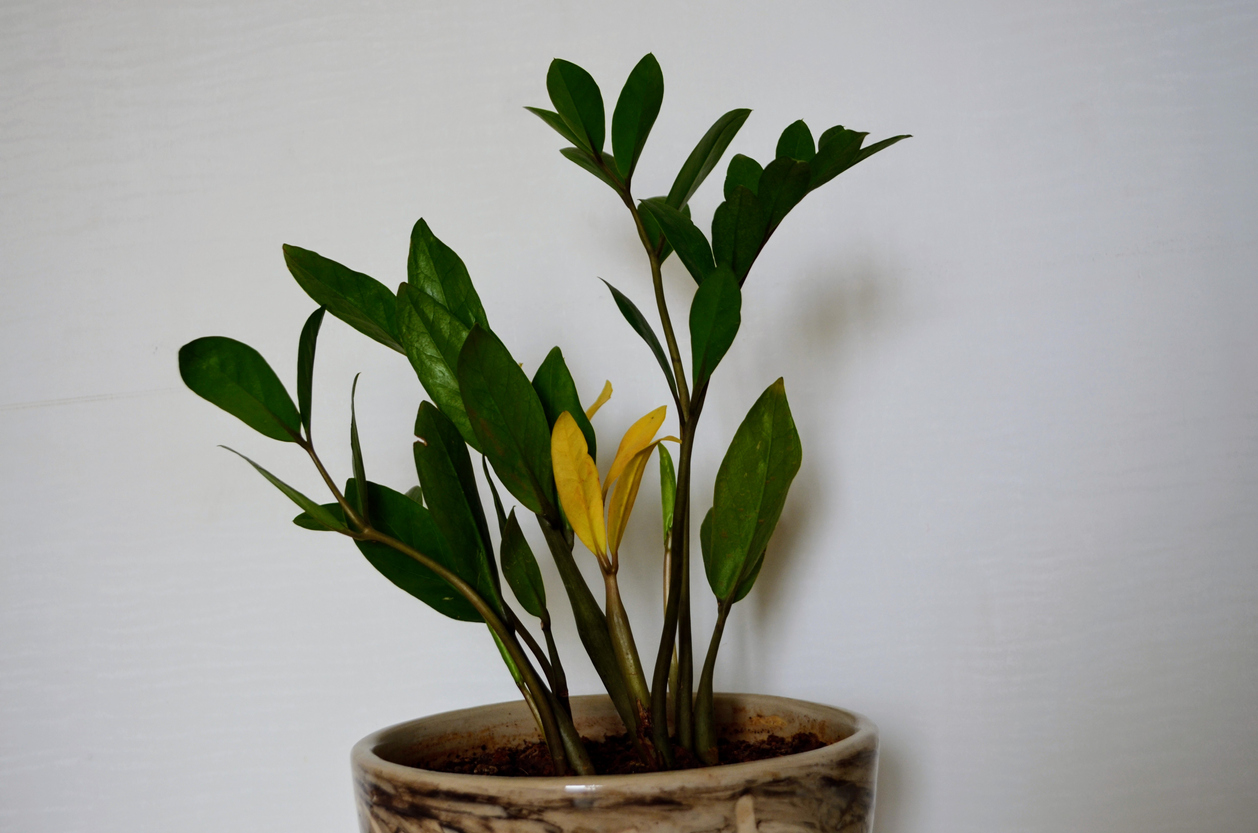
ZZ plants don’t have major pest problems, but they might attract aphids, spider mites, and whiteflies. If you notice any of these pests attacking your plant, rinse off the leaves with plain water. When a larger infestation is present, you can use neem oil to eradicate the pests.
If your ZZ plant has yellow leaves or it’s gotten soft, it likely means your ZZ plant is suffering from root rot caused by overwatering. Root rot is often a death sentence for plants, but in some cases you can fix it using these potential root rot solutions.
FAQs
Yes, when mature, ZZ plants produce a pale yellow flower just above soil level, at the center of the leaf stems that looks a lot like a little ear of corn.
ZZ plant repotting is easy. Get a pot that’s 1 to 2 inches bigger in diameter than the plant’s existing pot and fill it about 1/3 full of potting soil. Make sure your pot has a drainage hole.Then tip the existing pot to the side, gently grab the ZZ plant at its base, and carefully wiggle it out. Place the whole plant into the new pot and backfill it with soil until the pot is nearly full. Watering the plant before removing it can make removal easier.
No, ZZ plants do not like to be root bound because when too many rhizomes are clustered together, the plant is susceptible to root rot.
ZZ plants typically reach a maximum height and diameter of 2 to 3 feet, but some grow to 4 feet high.
